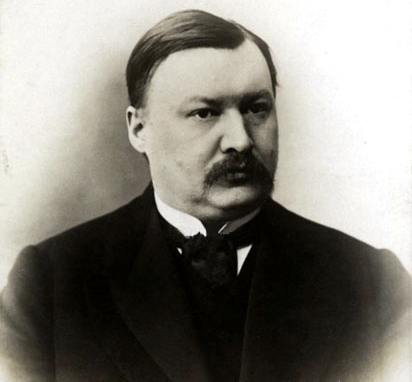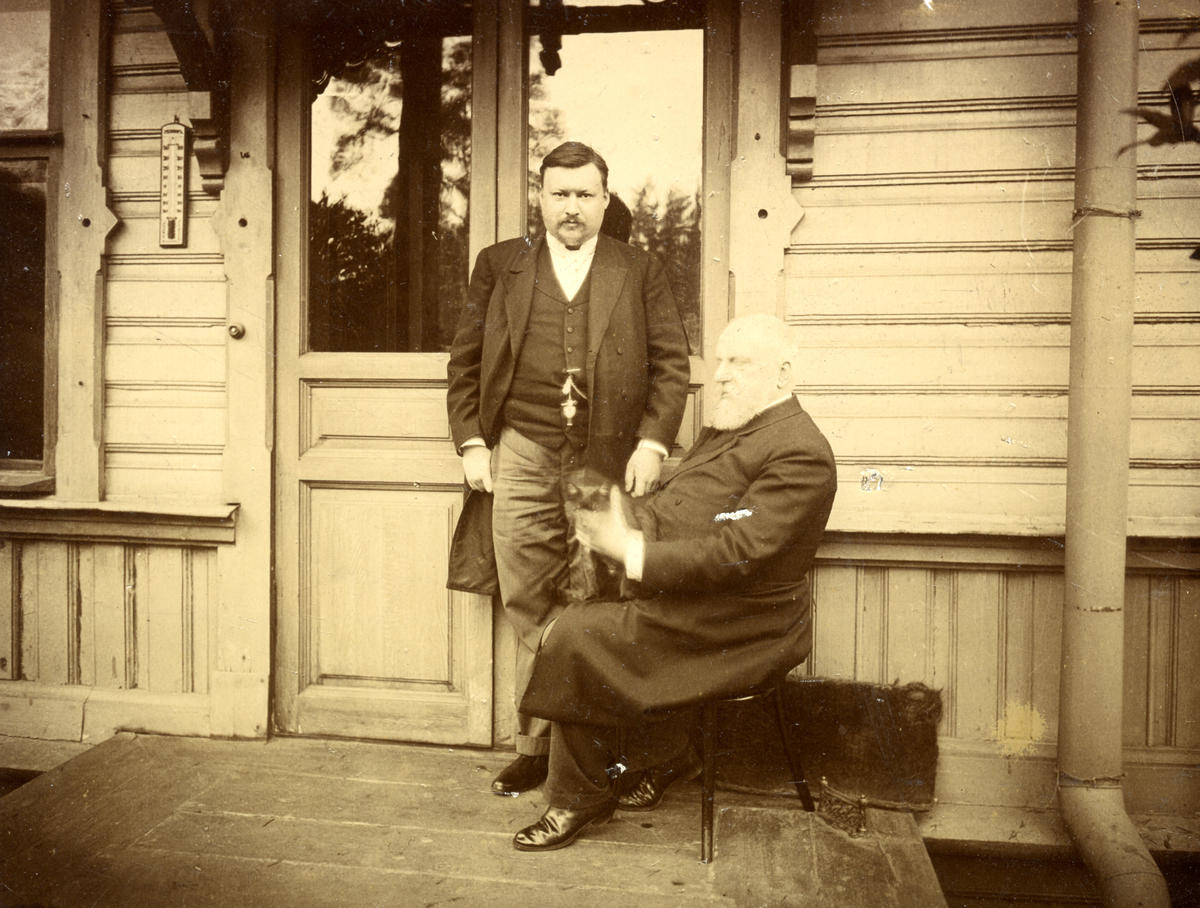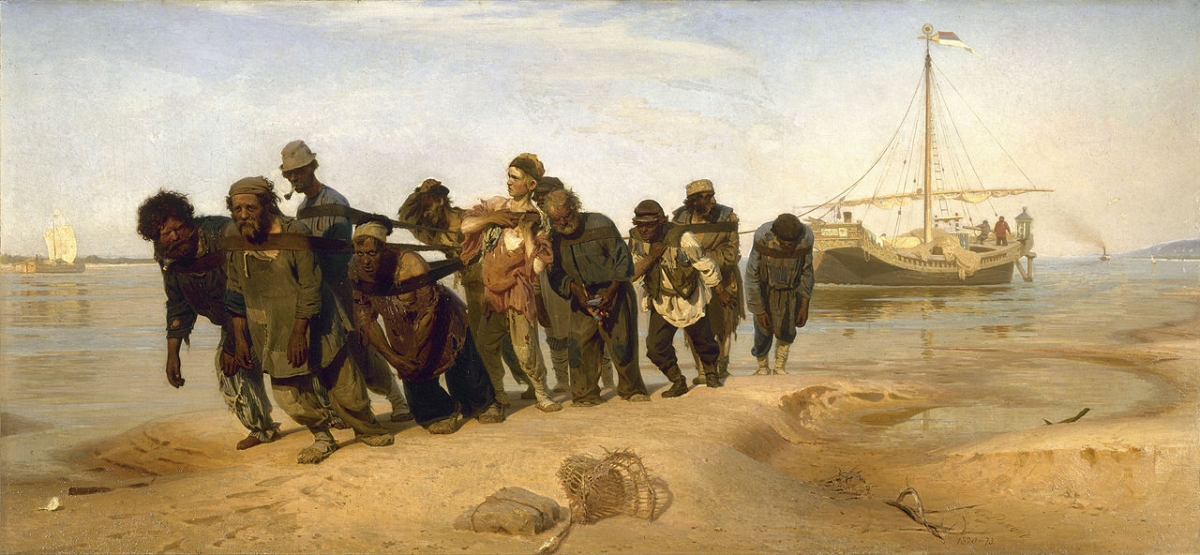 Composer of the Month: Alexander Glazunov
Composer of the Month: Alexander Glazunov
Over a lifetime that witnessed unprecedented musical and social upheaval in his homeland of Russia, this composer remained resolutely his own man.
Lived 1865-1936
Mostly in St. Petersburg, Paris
Best known for The Seasons, Symphonies, Violin Concerto
Similar to Rimsky-Korsakov, Balakirev, Borodin
Between the realism of Mussorgsky, who sought melody in the patterns of natural human speech, and the highly-strung autobiography of Tchaikovsky’s more personal works, Alexander Glazunov’s sane, well-made symphonies and gentle building on tradition seem remarkably tame to those looking for authentic Russian wildness.
One reason for the lower emotional temperatures is that, although he had composed three symphonies before Tchaikovsky took his final bow with the Pathétique, Glazunov was from a different generation. Many of his mentors came to maturity in the 1860s, the decade in which the emancipation of the serfs brought a new strain of thought devoted to all things genuinely Russian; it was the era of Chernyshevsky’s polemical novel What is to be done? and artist Ilya Repin’s masterly pictorial commentaries on social ills. By the 1880s, when precocious ‘Sasha’ Glazunov came into his own, painters had turned to abstraction and idealism had become the order of the day. If ever there was music to embody the notion of ‘art for art’s sake’, it is Glazunov’s.
Everything came easily to Glazunov. The son of a St. Petersburg publisher and bookseller whose own father had printed the first edition of Pushkin’s verse novel Eugene Onegin, Glazunov was encouraged in his first musical steps by his mother, a keen amateur pianist. At 13 he was introduced to Nikolai Rimsky-Korsakov by the doyen of Russia’s first musical nationalist movement, Mily Balakirev. Rimsky-Korsakov in his autobiography, My Musical Life, gives a characteristically vivid picture of “a charming boy, with beautiful eyes, who played the piano very clumsily” but whose musical development in harmony and counterpoint studies “progressed not by
the day, but literally by the hour”.
Master and pupil were already the best of friends by the time Glazunov’s First Symphony, completed when he was 16, had its first performance with Balakirev conducting in one of the nationalists’ Free Music School Concerts on March 17, 1882. Rimsky-Korsakov hailed it as “youthful in inspiration, but mature in technique and form”. The critical conscience of the nationalist circle, Vladimir Stasov, whose word was still law in the 1880s, described the principal characteristics of Glazunov’s early works as “an incredibly vast sweep, power, inspiration, wondrous beauty, rich fantasy, sometimes humour, sadness, passion, and always amazing clarity and freedom of form.”
The best of them owe something to the nationalist principles which Glazunov was soon to abandon, and a great deal to the example of the only great Russian symphonist other than Tchaikovsky up to that point: Borodin. The symphonic poem Stenka Razin, about the leader of the 17th-century Cossack rebellion against tsarist tyranny, commands a brooding introduction and variations both based on the famous Song of the Volga Boatmen. The Second Symphony of the following year, 1886, is saturated in the idiom of Borodin’s more leonine style alongside the first clear emergence of Glazunov’s delightful writing for woodwind solos (he encouraged Rimsky-Korsakov to join him in a hands-on study of wind instruments).
When Borodin died in 1887, Glazunov teamed up with Rimsky-Korsakov to piece together the still-unfinished opera Prince Igor. Glazunov’s seemingly photographic memory enabled him to reconstruct the Overture from memory. He added more to the Third Act and to the only two movements to have been sketched out of Borodin’s Third Symphony.
Glazunov wrote no operas himself, and very little vocal music. One of his greatest legacies to Russian music, though, was the part he played in consolidating a native repertoire of chamber music. The prompting came from a benefactor who played an even more important role in his life than Rimsky-Korsakov. Mitrofan Belyayev, heir to his father’s wood dealership enterprise and keen amateur musician, was enraptured by the premiere of Glazunov’s First Symphony. Three years later he founded a publishing firm for the music of Glazunov and others. MP Belaieff, based in Leipzig, produced more than 2,000 scores of new music.
At the same time, Belyayev’s Friday soirées developed musical forms largely neglected by Russian composers (though Tchaikovsky and Borodin had already composed five splendid string quartets between them). With himself as viola players through the quartets of Haydn, Mozart and Beethoven, with a new work featuring by way of conclusion; Glazunov’s First Quartet was an early offshoot, followed by five others of equal mastery.
“Belyayev’s Friday soirées developed musical forms neglected in Russia”
After supper at 1am, Glazunov would often play the piano before Belyayev and others hit the streets for further entertainment. Later, as the number of string players increased to allow quintets and sextets, he took up a second cello part. The Belyayev Circle, dominated subsequently by Glazunov, Rimsky-Korsakov and Lyadov, was to the 1880s and 1890s what the Mighty Handful of Russian composers centred around Balakirev – Musorgsky, Borodin, Rimsky-Korsakov and César Cui, making up the nicknamed ‘Five’ – had been to the 1860s.
Alongside these spirited entertainments, which spawned Glazunov arrangements of Bach fugues and Grieg songs as well as often playful piano works, symphonic progress advanced. The beauty of the wind writing and the piquancy of many lively scherzos – did any Russian composer ever write a dull one? – reach their apogee in Glazunov’s enchanting Fourth Symphony, marking his resurrection from an identity crisis in 1893. A new element in his symphonism had appeared following the St. Petersburg theatre season of 1888-92, when a German company under the distinguished conductor Karl Muck gave the Mariinsky Theatre premiere of Wagner’s four-opera cycle Der Ring des Nibelungen. “Glazunov and I attended the rehearsals,” notes Rimsky-Korsakov, “following them score in hand… Wagner’s method of orchestration struck Glazunov and me, and thenceforth Wagner’s devices gradually began to form a part of our orchestral tricks of the trade.”
It was not only the Ring which made its influence felt. Rimsky-Korsakov noted “clear traces of Tristan” in the slow movement of Glazunov’s Third Symphony. In the finales of the Third, Fourth, Sixth and Eighth, the good humour of Die Meistersinger as well as its exuberant counterpoint – an art at which Glazunov, too, was a natural – plays a major role.

Aleksandr Glazunov and Mily Balakirev
Evidently, too, it was only with Tchaikovsky’s death in 1893 that Glazunov could fully indulge his elder’s influence which he may have felt was at loggerheads with the more consistently nationalistic composers. The Fifth Symphony is perhaps his most nobly Tchaikovskian, and while two out of the three ballets he composed in the late 1890s – the full-length Raymonda with its vague background of medieval chivalry and the sugary Les Ruses d’Amour – never came close to the heights and popularity of Tchaikovsky’s Swan Lake and The Nutcracker, it’s thanks to its concise nature that a third, The Seasons, has stayed in the repertoire. Glazunov conducted a delightful recording of it in 1929 which demonstrates a rather surer command of the baton than during his famously disastrous premiere of the young Rachmaninov’s First Symphony in 1897; Rachmaninov’s wife alleged that Glazunov had been at the bottle before the performance.
His only other major music for the stage was incidental music for two plays. One was a momentous 1908 St. Petersburg production of Oscar Wilde’s Salome with actress-dancer Ida Rubinstein in the title role, sets and costumes by Léon Bakst and choreography by Mikhail Fokine; when all three struck out on new paths in Paris, Glazunov was not to follow. Later, in 1913, he provided a longer, more elaborately interconnected score for the poetically minded Grand Duke Konstantin Konstantinovich’s mystery play The King of the Jews.
Any fast-solidifying conservatism in Glazunov’s music was contradicted by his liberal actions. In 1905, as professor at the St Petersburg Conservatoire, he showed solidarity with director Rimsky-Korsakov’s resignation, a result of that noble composer’s sympathy with the students’ revolutionary actions in the January upheavals. When things returned to relative normality, Glazunov took up the directorship with Rimsky-Korsakov’s full approval. It was a post he held for 23 years, buffeted but not thrown by the aftermath of the 1917 revolution, when he defended the democratic principles he had always upheld in the Conservatoire.
His most distinguished pupils, though, showed how the old guard was fading with the rise of the new. Sergey Prokofiev, who entered the Conservatoire on Glazunov’s passionate prompting as a 13-year-old in 1904, started out by admiring the director’s well-made symphonies, playing them through in four-hand piano arrangements with his senior student friend Nikolai Myaskovsky, but by 1913 he was scornful of “fat Shurenok”’s style. The winged utterances of Alexander Scriabin, whose mystical aspirations first came properly to the fore in his Third Symphony, The Divine Poem, premiered in 1905, were more to the taste of this younger generation. The gulf between the director and his pupil was epitomised by the first performance in 1916 of Prokofiev’s Scythian Suite, originally a ballet score inspired by Stravinsky’s Rite of Spring, when Glazunov walked out eight bars before the end of the magnesium-bright sunrise finale.
His own music had gone as far as it could. The Violin Concerto of 1904 is a miracle of concision, wedding bittersweet melancholy to one of the most genuinely joyous concerto finales. In his last completed symphony, the Eighth completed in 1907, the slow movement for once sustains a genuine vein of disquiet, and the turbulent, chromatic Scherzo is an astonishing anticipation of Elgar’s even more giddying Rondo in his Second Symphony.
With the pressures of conservatoire life, Glazunov’s composing career was all but over. He survived Soviet life for a while, encouraging new talents such as the young Shostakovich and sharing cramped lodgings with his old mother as well as a lady friend whom Prokofiev was amazed to discover on the scene when he paid a visit in 1927. The following year, Glazunov was ready to spend as much time in the west as he could, settling on the grounds of ill health in Paris, where he died in 1936.
“With the pressures of conservatoire life, Glazunov’s career was over”
The distinguished scholar of Russian music Alfred Swan summed up the compositional burnout rather ruthlessly: “Glazunov’s musical talent was based on strong natural foundations, but was in no way nurtured by intellectual, literary or philosophical pursuits and interests. Hence, he was bound to reach the limits of creative development sooner or later.” Yet before he did, Glazunov left an approachable, attractive body of work which is much more than a halfway house between Mussorgsky and Tchaikovsky on the one hand, Prokofiev and Shostakovich on the other. His genius for robust, wholesome invention will not be forgotten.
His style
Orchestral Mastery
Glazunov never seems to have had any trouble with orchestration. His attempt to get to grips with various wind instruments in 1885 is typical of his attention to detail. Fellow composer Taneyev was reluctant to accept his help with instrumentation, but succumbed in the end.
A Talent For Dance
Like Tchaikovsky, Glazunov had a way with lilting, memorable waltz themes – and not just in the ballets. Dance movements surface in unexpected places, like the spangled sixth movement of the 1895 Coronation Cantata. His scherzos scintillate, and he is not afraid to use unusual metres – probably a legacy of Rimsky-Korsakov’s folk-based experiments.
Mood Music
An instinct for atmosphere comes in useful for the nature-inspired symphonic poems – The Forest (1887) and The Sea (1889) – as well as for the brooding introduction of Stenka Razin, based on the semi-traditional Song of the Volga Boatmen. Glazunov is also a master of the slow symphonic introduction, often linked thematically to livelier music.
Natural Development
Quick on the uptake to learn from Rimsky-Korsakov’s tuition in harmony and counterpoint, Glazunov often seems effortless in his symphonic developments alongside the more laboured efforts in many of Tchaikovsky’s works. His finales show remarkable skill in bringing various different themes together.
http://www.limelightmagazine.com.au/features/composer-month-alexander-glazunov
Glazunov – controappunto blog
Alexander Glazunov – Polka in D major “Les Vendredis”
http://www.controappuntoblog.org/2012/05/06/alexander-glazunov-polka-in-d-major-les-vendredis/

